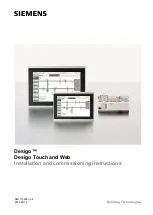
Panasonic
Solar Cells Handbook, Page 2
August 1998
1. THIN-FILM SOLAR CELLS (SUNCERAM II)
1.1.
General Information
Research conducted by Panasonic over many years on
solar cells and the application of this new technology
culminated in 1984 with the successful development of
the world’s first thin-film solar cell using compound
semiconductors. The company named these cells
Sunceram II.
The Sunceram II cells have good weatherproof
properties and high spectral sensitivity characteristics
over a wide wavelength range. Furthermore, since the
entire film-forming process involves only screen-
printing and since belt sintering is employed, these cells
are very amenable to mass production. It also means that
high-voltage type solar cells can be formed at a high
density on a single glass substrate, and that it is easy to
produce them with larger surface areas.
Besides developing compact and lightweight Sunceram
II modules for outdoor use which maintain a stable
performance over prolonged periods, Panasonic has
developed compact, high-performance Sunceram II sign
units which are used in combination with the company's
own coin-type rechargeable batteries.
With its sights firmly fixed on power sources for the
new forms of soft energy which will be abundant in the
twenty-first century, Panasonic is committed to
developing new products which will fill the needs of the
market.
1.2.
Principle of Power Generation
The principle of power generation behind the Sunceram
II solar cells consists of the utilization of the
photovoltaic effect of semiconductors. When such a cell
is exposed to light, electron-hole pairs are generated in
proportion to the intensity of the light. Solar cells are
made by bonding together p-type and n-type
semiconductors. The negatively charged electrons move
to the n-type semiconductor while the positively charged
holes move to the p-type semiconductor. They collect at
both electrodes to form a potential.
When the two electrodes are connected by a wire, a
current flows and the electric power thus generated can
be transferred to an outside application.
Load
Negative electrode
Positive electrode
Electrons
Positively charged holes
(positive charge due
to absence of electrons)
Light
Glass substrate
Current-collector
p-type
semiconductor
n-type
semiconductor
Cross-sectional view of Sunceram II




































